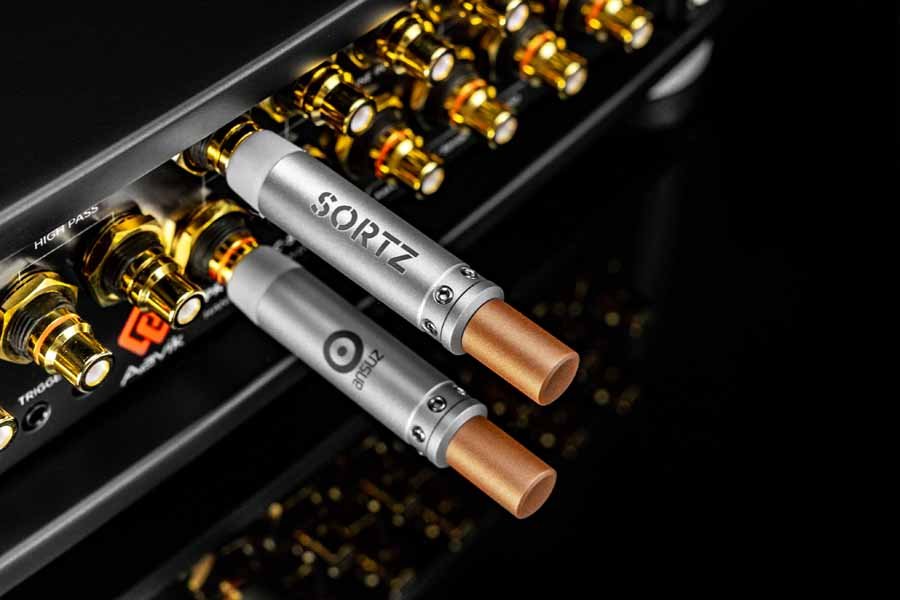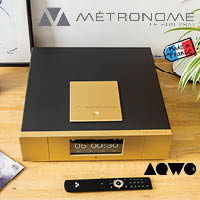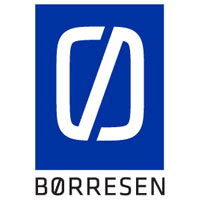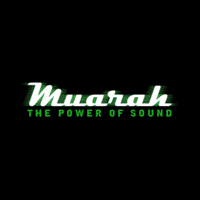Ferrum Audio ERCO Headphone DAC/Amp & HYPSOS Power Supply
There is an abundance of DACs out on the market these days in the $1000-$5000 range, from purist, all discrete pieces to digital do-it-alls with built-in streaming to standard desktop DAC/amp combos and everything in between. While there are plenty of superstars in the crowded field, most of these units don’t have much in the way of interesting provenance. Many DACs are just line extensions from established brands while a lot of new brands source products from the same handful of quick-turn manufacturers. How many DACs in this segment of the market are offered by a new brand, are designed in Europe and are built in Europe by an established manufacturer? Not many. Enter Ferrum Audio.
Ferrum Audio is a new brand launched by established Polish audio manufacturer HEM. Although HEM has been in business for over 20 years, they have maintained an OEM business model until the debut of Ferrum as their house brand. Ferrum’s first product was the innovative HYPSOS power supply. Power supplies don’t make music on their own so Ferrum quickly followed up with the OOR, an all-analog, fully discrete headphone amplifier. With the ERCO, Ferrum attempts to reach a broader audience by combining a DAC, head amp and a smart mix of features into a complete desktop solution. I was fortunate to receive the ERCO ($2395) and HYPSOS ($1195) together for evaluation from VANA Ltd., the North American distributor for Ferrum. Thanks to Roy Feldstein of VANA for the opportunity to listen to these new products.
Features & Specs
Does anyone else scroll right past the technical specs of a DAC down to the inputs and outputs? In terms of digital connections, the ERCO offers the standard trio of coaxial, optical and USB. No soon-to-be-outdated Bluetooth, WiFi or built-in streaming. Both RCA and XLR outputs are offered on the rear while 6.3mm unbalanced and 4.4mm balanced headphone jacks are available upfront.
Many DAC amp combos include an option to switch between line-level output and preamplifier output (e.g. volume control engaged). What sets the ERCO apart is the RCA analog input. This allows the ERCO to accept an analog source such as a phono stage for use as a true preamplifier, not just a digital desktop system. In my music room, with a CD player and occasionally a turntable, the Alps branded volume potentiometer got some real usage.
It is also refreshing to see a brand new DAC that doesn’t have a dozen filter and EQ options to learn. Just the way it should be. Zeros and ones flowing in and sweet, sweet analog flowing out.
Always noteworthy are the headphone amplifier power specifications. For unbalanced ‘phones, the ERCO provides 1.7 watts into 50 ohms and 300 mW into 300 ohms. For balanced headphones, the power rating is an almost excessive 6.1 watts into 50 ohms and 1.2 watts into 300 ohms.
For a power supply, the HYPSOS is loaded with functionality. It is compatible with dozens of popular audiophile products and the appropriate voltage and current settings for each are selectable from the UI on the front panel. In addition, the output voltage can be safely tweaked up or down while in operation. It would be great to have a second output to power, say, a phono preamp that could feed the ERCO directly.
Published specifications for both the ERCO and HYPOS are extensive. For convenience, they can be found on the manufacturer product pages: ERCO & HYPSOS.
Design & Build
The Ferrum products feature professional, no-nonsense designs and cases. Controls are intelligently laid out with no superfluous dials and adjustments. The only embellishment beyond the purely functional are the square panels on the left of the front fascia featuring an illuminated Ferrum ‘Fe’ logo. Painted to look like rusty iron, the logo panel adds a tasteful wabi-sabi element to the otherwise austere look. Having been annoyed by blinding LEDs at night on some electronics, I love that both the ERCO and HYPSOS offer dimmers for the logo.
I did not pop the hood on either review unit but for anyone interested, Ferrum created some quality YouTube videos walking through the design of the ERCO. For the asking price ($2395), I appreciate that serious thought went into the electronic circuit design. Ferrum may be a new brand but this speaks to the experience of their engineering team.
The ports and switchgear all operated flawlessly and where applicable, provided confident tactile feedback. The headphone outputs were secure and gave the impression that they would hold up over the long run.
Daily Use
Integration of the ERCO into my system was simple, convenient and wholly uninteresting except for the ease of switching between line out and pre-out modes for feeding various amplifiers taking over my house. Just a quick turn of the dial in the rear with a screwdriver or key. No cryptic menu or internal jumper switches here.
One quibble with the ERCO’s usability is the lack of a remote. To Ferrum’s credit, they did boldly declare that, with the arrival of the ERCO, “Desktop high end just became a thing…” but in my office, none of the electronics live on my desk. This was a personal inconvenience but anyone looking for a literal desktop solution should be fine.
Setting up the HYPSOS to power the ERCO was straightforward because its default setting is to power Ferrum devices. Powering another brand’s device would entail using one of the included connectors instead of the Ferrum Power Link and then selecting the appropriate device from the GUI menu for the correct voltage and current.
Review System
The challenge and the fun of reviewing a product like the ERCO are all the possible system configurations to try. Digital sources I used to feed the ERCO were my Macbook Air via USB and my Yamaha disc player via coax or optical. Headphones used were my Sennheiser HD6XX, my KZ ZSN Pro IEMs and the Sendy Audio Peacock (Audiophilia review forthcoming). Analog line-level outputs of various amps and preamps and other DACs were also used to feed the ERCO for both headphone and loudspeaker listening. The PSB B600 stand mount speakers (Audiophilia review forthcoming) were the most frequently used speakers for this review.
Ferrum combo.
Listening
I started getting to know the ERCO as I expect it would be most commonly used: on its own driving headphones in my listening room. First impressions were a bit nebulous because, by the time I started to get a feel for the sonic personality, I was already several weeks into running it as a daily driver.
Spinning CDs of Gunter Wand leading live recordings of the Berliner Philharmoniker playing Bruckner Symphony No. 4 & No. 8 (RCA Red Seal, 1998 and 2001 respectively), sweeping melodies, bold brass and weighty dynamics provided fine fare for testing the ERCO with multiple headphones. The HD6XX seemed to be their normal self, with a tone that was beautiful and a touch dry and a soundstage that was a bit intimate for a Bruckner symphony. With the higher-end Sendy Peacock the natural tone remained but the soundstage was blown wide open allowing for more detail to shine through. I found no harshness whatsoever in the brass with either headphone. As for the low end, I’ve gotten more bass out of my over-ear cans from other amps but the ERCO delivered comparatively better clarity.
The nostalgia of past summers had me craving the cathartic release of some energetic garage and punk. Heavy in the rotation with the ERCO were Motor City legends like the Dirtbombs and Detroit Cobras, the Immortal Lee County Killers and Electric Frankenstein. You don’t come across these guys often in audio reviews? They all have a couple of things in common: irreverence towards society and respect for their rock & roll forefathers.
When I wasn’t blasting unabashedly high SPLs on the resident PSB B600 when I had the house to myself I was content rocking out at safe levels over headphones. Naturally, the more primitively recorded selections came off as a wall of sound over speakers. But with headphones, I heard soundstage, coherent vocals, spit in the microphone and a distinct bass guitar. All without treble exhausting my eardrums. Even with a wider range of music, the ERCO was consistently fatigue-free, even when using my KZ IEMs, which, for better or worse, provide ample high-frequency information. I suspect the ERCO would mate well with some of the most revealing cans out there. Power was never a concern either. Even with the 300 ohm HD6XX I never needed to boost the gain.
The ERCO is likely to see plenty of use feeding integrated amps in line-out mode. In my time using the ERCO as a DAC only, feeding amps via line-level output, I found it hard to untangle what flavour, if any, it was adding to the music. As it should be in my opinion—let the downstream equipment do their thing. Moving away from USB is just starting to become a trend in high-end. Still, I hope USB lingers for a while due to the sheer convenience of plug & play streaming from a laptop. The ERCO’s USB C is a nice update from the almost ancient USB B style. I still enjoy the punchy sound of my Schiit Modi DAC (if they’re still $99 it’s a miracle) but the ERCO easily steps up the performance across the board.
I made my point about the remote so let’s get right to the sonic performance of the ERCO as a preamp. Streaming Lady Blackbird’s late 2021 stunner Black Acid Soul (Foundation Music/BMG) was informative. This heavily Nina Simone-influenced vocal jazz album is both fresh and familiar and well recorded to boot. Feeding the PSB B600 speakers via either my Parasound HCA-750A or the Denafrips Hyperion the ERCO performed admirably. Listening for spatial aspects of the presentation, because in my personal experience that’s where preamps contribute the most, I found the ERCO to provide a sufficiently expansive soundstage with Lady Blackbird’s breathy vocals nicely focused. It wasn’t as transparent as the Denafrips Hades preamplifier but that unit costs almost as much as the ERCO and contained essentially just a power supply and volume attenuator. I wouldn’t hesitate to use the ERCO to drive a power amplifier directly.
Does the HYPSOS affect the sound audibly? I found it does, albeit slightly. As with all power accessories, whether a change is audible may depend on the existing AC coming from the wall, the system it’s installed with or (I’m going there) listener bias. Additionally whether that change is in fact an upgrade is a matter of taste. In my experience, differences were most apparent over headphones. I found the HYPSOS tended to take a bit of edge off—to sweeten the presentation a bit—like doubling down on the very agreeable nature of the ERCO’s own sound. I preferred the HYPSOS but might not have missed it if I never tried it.
HYPSOS rear panel.
My thoughts on equipment matching come with the disclaimer that some of my most used headphones and speakers are relatively laid back. While the ERCO is indeed very detailed the overall presentation was very approachable and far from forward or fatiguing. Speakers like my Wharfedale Diamonds and headphones like HD6XX with their midrange emphasis pair well but I suspect downstream equipment on the more revealing side would do well with the ERCO. If the opportunity arises to update Audiophilia readers with more listening impressions I will oblige.
Conclusion
I sense more skepticism from the audiophile community about the value of high-end DACs than other components such as analog sources or speakers. Fair? Depends on your experience and your system goals. I’ve heard true audiophile performance from DACs that cost as much as a decent bottle of wine. On the other hand, I’ve experienced moving performances from products well beyond my means. The price of the ERCO ($2395) puts it right in between those extremes. Many can afford it—but should they? Its clean, detailed and ever so slightly cozy sounds will provide immense musical enjoyment. Combine that with a feature set designed for longevity and the case for the ERCO is strong. Hats off to Ferrum.
Further information: Ferrum Audio





























